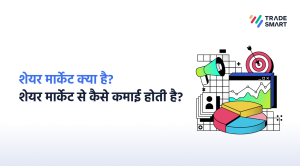
Before we look at tax-saving investments other than 80C, let us first understand Section 80C of the Income Tax Act, 1961.
Section 80C, Income Tax Act, 1961, is the most common tax-saving scheme used by taxpayers in India. So, let’s understand what 80C means.
Under section 80C of the Income Tax Act 1961, you can claim a tax deduction of up to INR 1,50,000 for investments made in specific tax-saving instruments like Public Provident Fund, National Pension System, Life Insurance, Mutual Funds, tax-saving Fixed Deposits, etc.
However, the tax deduction is only usable on the premium paid towards these investments. For the returns earned on these investments, you not only have to pay an income tax as per your slab but are also liable to pay the entitled TDS on all incomes earned.
Although we could list well over 18 investment tools that benefit from this act, we’ll stay on the point of considering other investments than 80C. But before that take a glance at some of the most profitable investments that also save tax under Section 80C:
-
ELSS
Equity-Linked Savings Scheme helps you save up to INR 1,50,000 on the premium in taxation under Section 80C of the Income Tax Act, 1961, while also helping you grow your investments over time by investing in equities.
-
NPS
National Pension System is a scheme that allows you to plan your future income post-retirement, while also giving you a tax benefit of INR 1,50,000 under Section 80C and another relaxation of INR 50,000 for the contribution made.
-
Fixed Deposits
A hot-favourite among Indians when it comes to finding a stable and safe investment. FDs give you a fixed rate of interest. If your fixed deposit is a tax-saving FD, it has to be an investment of a maximum of INR 1,50,000 and held for a minimum period of 5-10 years depending on your FD provider.
-
PPF
An employee, employer, or both can contribute to a Public Provident Fund. Not only does it provide a lucrative return over time, but also makes for retirement planning. It allows for a tax redemption of up to INR 1,50,000 per fiscal.
-
ULIPs
Unit Linked Insurance Products combine the best of insurance and investment in one product. They help you save for your retirement while also remaining assured under your insurance coverage.
-
Sukanya Samridhi Yojana
Targeted at parents of girls in India, this scheme allows people to build funds for the education and marriage of their girl child.
Note that if you invest in all the above tools or more, your total rebate remains INR 1,50,000, irrespective of how much investment has been made in each asset individually.
Apart from this section under the Income Tax Act, 1961, we list five of the most useful Income Tax saving schemes other than section 80C.
Section 80D
Buying health insurance is always a wise choice. Choose the right policy to avail of premium healthcare. But that’s not all. Did you know health insurance under Section 80D of the Income Tax Act, 1961, gets you tax benefits too?
As per section 80D, you can avail tax deductions on the premium paid towards buying health insurance for yourself, your spouse, children and parents. If you purchase health insurance for yourself or your children or your spouse, you can get a tax deduction on the premium of up to INR 25,000.
If you buy health insurance for your parents, the deduction eligible amount increases to INR 50,000 every year. Moreover, if your parents are senior citizens, the amount increases to INR 75,000 of tax deductions on the premium paid for a financial year.
Section 80E
You can get a tax deduction for any interest you pay on an education loan for yourself, your spouse, children or parents. Although there is no maximum cap limit to it, you can only make use of this tax deduction for seven years or until the total interest is paid – the lesser of the two.
Section 80G
To promote more community development and contribution towards noble causes, the Government of India has various policies to favour NGOs dedicated to building the nation and empowering the marginalised in India. One such example is forgoing taxes for the amount paid in donations. Under section 80G, all donations made to an NGO that has an 80G certificate will be up for tax reduction. However, there is an upper limit to it, which is 10 per cent of the readjusted amount.
Section 80TTA
You can get a tax deduction of up to INR 10,000 per fiscal year on the interest earned for the money kept in your savings account.
House Rent Allowance
This is beneficial for salaried employees who pay house rent. They can claim a deduction for the lowest of the following three:
- The whole HRA
- 40% of basic salary+Dearness Allowance, if the taxpayer is living in a non-metro city
- 50% of basic salary+Dearness Allowance, if the taxpayer is living in a metro city
FAQs
-
How much tax can you save under Section 80C?
On the premium you pay towards tax-saving FDs, ULIPs, certain bonds, insurance, etc., you can get a deduction of up to INR 1,50,000.
-
How much tax can you save under Section 80D?
On the premium you pay for your health insurance, you get a relaxation of INR 25,000. The same reduction applies to your partner or child’s health insurance. For parents, you get INR 50,000 deductible, and if they are senior citizens, it can go up to INR 75,000, depending upon the premium.











